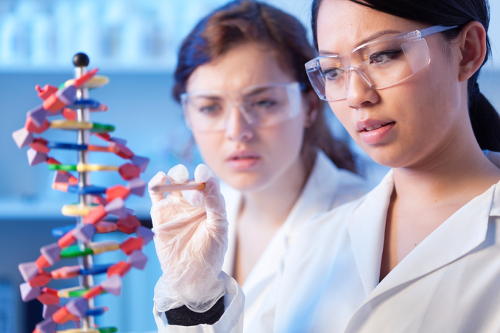Until recently, “Germline genetic interventions were the subject of science-fiction novels and scientific theoretical debate, but considered non-executable.”[1] Nowadays, the cloning techniques, the use of stem cells, the formation of gametes from pluripotent stem cells, the ease with which they are manipulated and, in particular, the use of the tool CRISPR-Cas9[2], are as many advanced techniques that will induce important genome modifications that may be passed on to future generations.
Thus, in the press release sent after two years of work that led to the publication of a report on “The human genome and human rights”, the International Bioethics Comity (IBC) of UNESCO called upon a moratorium, “a temporary ban on genetic engineering of the human germline”. This request came with two others; first, the ban on human cloning, experts considering that no “medical or ethical argument” can support such a practice. Secondly, concerning mitochondrial DNA, the report affirms that “it is essential to have reliable international scientific fora to ensure that these procedures are adequately proven to be acceptably, safe, and effective as treatments before considering them for use in human beings” (…)”At the same time, acknowledging the existence of different perspectives and normative standards, the debate remains open on the ethical acceptability of these techniques.”
According to the experts, security is the “incontestable condition for these techniques to be applied on human beings” [4]. Along with many scientists, they believe that “we still know too little about genetic interactions and their possible involuntary consequences on the modification of the human genome” [5]. The report goes on: “« By eliminating some harmful predisposition, other problems may result and impose other risks potentially as serious as the ones we were able to eliminate upon individuals and the human species itself” [6]
The IBC also speaks of the questions of dignity, reminding the readers that the human genome is “the heritage of humanity”, which underlines the “exceptional value of what must be protected and transmitted to future generations”. The experts believe that “interventions on the human genome should be admitted only for preventive, diagnostic or therapeutic reasons and without enacting modifications for descendants” under penalty of “jeopardizing the inherent and therefore equal dignity of all human beings and renew eugenics, disguised as the fulfilment of the wish for a better, improved life”.
The report underlines the fact that « medical reasons should always remain the limit that should not be crossed”. It praises the intention of these researches which should help to avoid abortion on medical grounds: “The goal of eliminating terrible diseases can only be a shared one and gene therapy could also help reduce the controversies on the principle of respect for life, as it could be a way to address the cause without raising the issue of deciding on the life itself of the foetus or embryo that carries it.” However, with the exception of that situation, the report hopes to “discourage” or even “ban” the “the performance of spectacular achievements without any sound medical reason”. It warns against the risk of eugenic practices, which plan the “the simple elimination of human beings considered as ‘imperfect’ on an ideological basis”, and against the risk of discrimination and stigmatisation “of those who cannot afford such enhancement or simply do not want to resort to it.” [7].
It underlines the responsibility of researchers and goes further: “It is important for States and governments to accept the principle of a shared global responsibility when the engineering of the human genome is involved” [8], explained by “the race to be the first”.
On a legal point of view, the report invites “States and governments, especially in relation to editing the human genome so that genetic modifications would be passed on to future generations, to renounce the possibility of going into it alone within their own legal system” [9] It reminds that a “several kinds of ‘medical tourism’ related to assisted reproductive technologies and surrogate motherhood, just to mention the most debated examples [10], is related to the difference between the various legislations : ”what becomes legal in one single country becomes allowed”.[11].
Experts did not however manage to come to an agreement over the difficult issue of embryo destruction “involved in some of these techniques” [12]. The divergences were focalised on “the principle of respect for human life and the related issue of the status of zygotes, embryos and foetuses”. As a conclusion, the report explained that “The ethical debate on producing and destroying human embryos for some relevant human good continues”.
The other aspect over which the experts did not reach a consensus concerns the respect of human life at its beginning. On this subject, the IBC “suggests applying the method of the largest possible inclusion: the procedures that should be encouraged are those that are ethically ‘non-controversial’, that is respectful as much as possible of the different sensitivities and cultural traditions.” It considers that “National legislations and international regulations and guidelines ought to be framed accordingly.”
Finally, the report, while underlining the importance of scientific progress, invites “the international community, States and governments, scientist, actors of civil society and individuals” […] “to consider the human genome as one of the premises of freedom itself and not simply as raw material to manipulate at leisure”. [13]
[2] Which enables one to intervene on the DNA
[3] UNESCO’s international bioethics comity (IBC) made up of thirty six independent experts from various countries: scientists, philosophers, jurists, ministers.
[4] N° 105.
[5] N° 105.
[6] N° 105.
[7] N°110.
[8] N°112.
[9] N°116.
[10] N°116.
[11] N°112.
[12] N°106.
[13] N°128.

